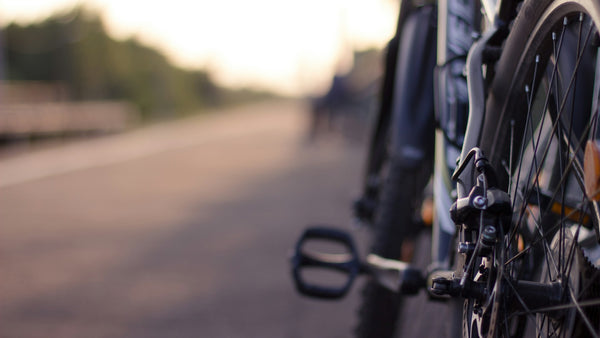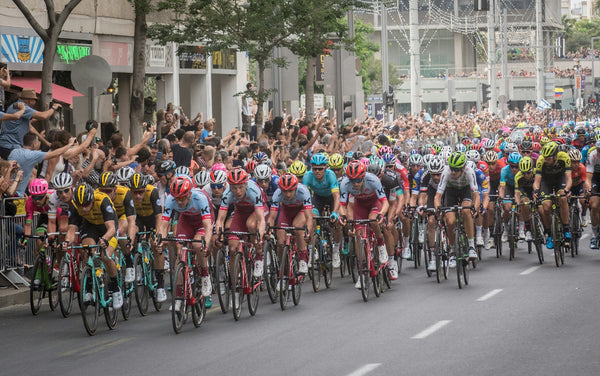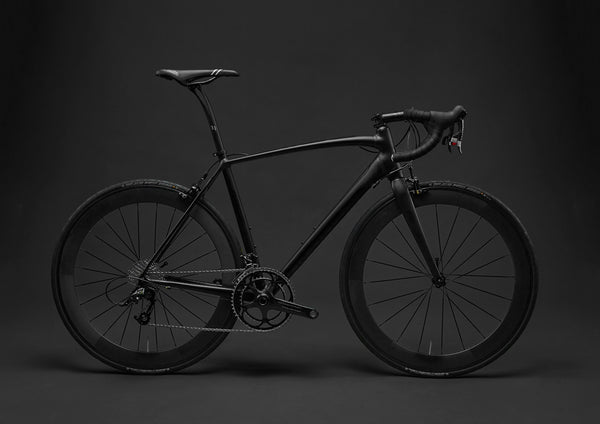Though it’s always a good idea to make sure your muscles are nice and warmed up before you start hard efforts on the bike, there are many different ways to warm up before cycling. Deciding which methods are right for your cycling warm up has a lot to do with how long and how hard you intend to ride or race.
Avoiding injury and optimizing performance are the two major reasons you should carve out a bit of time to warm up, even if you are typically pressed for time when fitting in your rides around work and family obligations.
Pre-ride warm up exercise for intense cycling efforts
When you plan a big day in the saddle, whether you are racing or perhaps are aiming to smash some KOM/QOMs on your training route, it’s extremely important to make sure your body is ready for the effort before you start to smash it. Your warm up pre-ride can have a direct impact on how well your muscles perform throughout the ride or race.

Activate your core
We would advise first to make sure that you activate your core before warming up for cycling. You’ve probably heard that term before. And though it might seem obvious, it’s not something that cyclists traditionally have been great at doing. We often think just being on the bike is enough to start engaging our muscles. But frequently, we are just relying on those few groups of muscles that we use a ton – the quads and the glutes – while ignoring our deeper core muscles that can actually help us improve our performance.
Relying on just the most obvious sets of muscles often opens us up to injury since we’ll put an excessive amount of pressure on those regions. There are several methods you can use to activate your core but a favorite of ours is to lie on your back with your knees above your hip and your lower legs at a right angle to the ground. Squeeze your glutes and your tummy muscles to press your lower back against the floor.
We are great proponents of any exercise that allows us to lay down! But the effort doesn’t stop there. Once you have your lower back flush with the floor and your legs in position above your hips, press the palm of your hands against your knees trying to push them in the direction of your feet. Use your core muscles to resist the pressure. You should feel the effort in the legs and arms, and when full pressure in both directions is being applied without movement in either direction, then you are successfully activating your core. Hold position for 20 to 30 seconds and then release. Then repeat the position applying the pressure again for 20 to 30 seconds.
On-the-bike warm up
Once you have your core activated, you will want to ensure you take time to warm up on the bike. Though static and dynamic stretching has a place in your exercise routine, it is not advisable to stretch muscles before an important race or ride. Studies repeatedly have shown that stretching muscles and tendons can be detrimental to muscle performance. Though that seems counterintuitive, the reason lies in the fact that stretching loosens muscles and tendons, but it is the tension in the muscles that helps them put out greater power.
The goal to a pre-ride warm up is not to loosen but to warm up the muscles. Doing that properly will help both the performance as well as reduce the chance for injury. The sight of cyclists warming up on their rollers or trainers is a common sight from the pros riding the Tour de France on down to juniors racing in a local crit series. And there is a good reason for that: it works.
Iit is important to realize that it is possible to over-warm up, which can also negatively impact performance. Whether you are on the trainer ahead of a race, or just taking the first 10 or 15 minutes of a ride to ease yourself into the effort, be certain to keep your warm up in Zone 2 endurance pace most if not all of the time.
The level of warming up will be different depending on your ride or race plans. If you are getting ready of a short intense race like an hour-long criterium or a cyclocross race, or you have barely an hour for your lunch ride, then you want to do a slightly longer on the bike warm up, still mostly in Zone 2 but with one or two harder sprint efforts to unlock the muscles and make them ready for hard efforts from the start gun.
Keep in mind, though, that warm ups are draining glycogen levels, so if you are doing an endurance oriented ride or event, it may be better to tone down your warm-up or eliminate it altogether. If you will be on the bike for six hours or more already, then you will need to be careful how you dose-out your efforts.
Post-ride stretches for cycling
Though pre-ride stretching frequently has a negative impact on the ride, it is essential to take time to engage in stretching post-ride. An active cool-down can take place on the bike as well. Again, you will have seen riders at the Tour de France on their rollers outside the team buses even after seven hours racing to help flush the lactic acid out of the muscles. This is certainly something you can also do, whether you get on your own home trainer when you are done with your ride, or just take the last 10 minutes easy till you roll into your garage.
Stretching while the muscles are still warm can also help relieve the tension in the muscles, maintain your flexibility, and most importantly increase blood flow to the muscles to help with your recovery.
There are a wide range of stretches that you can use to accomplish this. Identifying the regions that you want to address when stretching will make it easier to zero-in on the type of stretch you need to do. For post-cycling recovery, you will want to focus on your legs of course, but also your hips, abdomen, back, neck and arms.
Seated hamstring stretch:
- Sit with one leg extended and your back straight. Bend your other leg so that the sole of your foot rests against your mid-thigh.
- Reach toward your ankle. Keep your knee, neck, and back straight.
- Feel the stretch in the back of your thigh.
- Hold for 30 to 60 seconds. Repeat 2 times.
Quad stretch:
- Grab your ankle with your hand and gently pull it back. You should feel a stretch through your quad (the front of your thigh).
- Drop your ankle back down and reach over and up with the same arm.
- Repeat three to five times on each side.
Butterfly stretch:
- Sit down on the floor or ground with your legs in front of you.
- Gently pull your feet up towards your groin bending until it is at a comfortable spot and the soles of your feet are touching.
- Hold your feet with your hands and rest your elbows on your knees.
- While keeping your back straight (no slouching), apply gentle pressure on the inner thigh by pressing on the knees with the elbows. You should feel a slight pulling and tension in the groin.
- Hold the stretch for 20 to 30 seconds.
- Release and repeat three times.
Hip flexor stretch:
- Stand with your right foot forward, and your left foot extended straight back.
- Bend your right knee into a forward lunge (so it’s at a 90-degree angle).
- Press your hands into your forward knee and move your hips forward. You should feel a stretch on your left side.
- Hold for 20 to 30 seconds.
- Switch legs and repeat. Three times each side.
Abdominal stretch:
- Lie down on your stomach.
- Place your hands in line with your chest.
- Push up slowly.
- Arch backwards.
- Try to keep your belly button in contact with the floor.
- Aim to feel a stretch in the upper abdominal region.
- Hold this position for 30 seconds.
Pat on the back stretch:
- Lift both arms overhead and then bend your right elbow so that the right hand lands behind your shoulder blades.
- Grab the right elbow with your left hand and gently push it behind you while keeping your chin lifted.
- Repeat on the other side.
- Hold for 20 seconds and repeat two to three times.
Shoulder hold stretch:
- Stand with your feet shoulder’s width apart.
- Relax your shoulders away from your ears and stretch your right arm across your chest. Grab above or below your elbow joint with your left hand.
- Repeat on the other side.
- Make sure the shoulders don’t creep up to your ears—keep them relaxed.
- Hold for 20 seconds and repeat two to three times.
Cycling warm up - Summary
These are a few of our favorite stretches to do after a ride, though there are many more options if for some reason one or more of these does not work for you. The important thing is to be sure that you are not over-doing it, especially if you have not been a regular stretcher in the past. Flexibility is something that you can improve over time, with regular, measured stretching sessions. Don’t push too much too fast.
To answer the question whether you should warm up before cycling, the short answer is yes. But it is important to approach your warm up keeping in mind what your ride goals are. And don’t forget that the cool down after cycling is just as important as the cycling warm up.



































































































































































































































































